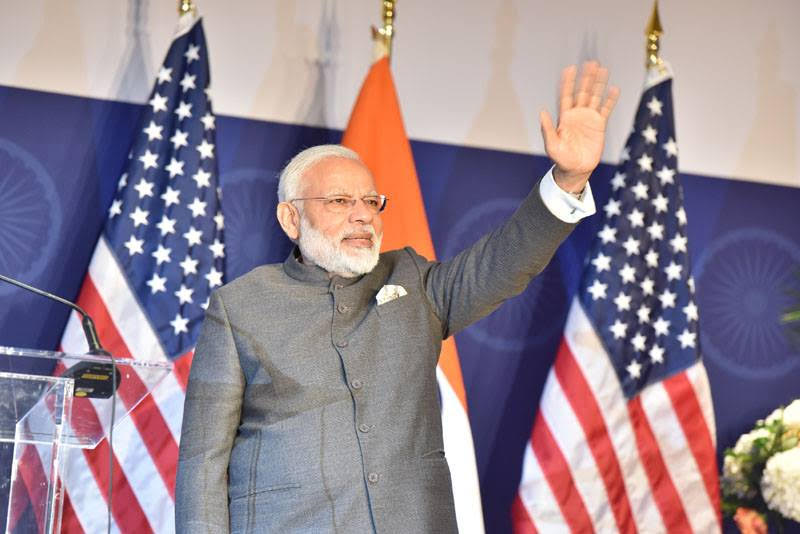India’s 2024 election does not portend era of decentralized coalition politics

Despite this spring’s electoral setback, the ruling BJP retains its dominant position at the center of Indian politics and prevailing political conditions do not portend a truly decentralized coalition politics, according to a new study.
In a new paper, Milan Vaishnav, Indian American director of the South Asia Program at the Carnegie Endowment for International Peace and Caroline Mallory, a James C. Gaither Junior Fellow in the Carnegie South Asia Program, discuss what they call “The Resilience of India’s Fourth Party System.”
The resurgence of coalition politics in New Delhi and the presence of a much stronger political opposition has prompted discussion of whether India’s 2024 general election results reflect a repudiation of the fourth party system and a reversion to a more decentralized, fragmented era of Indian politics, they write.
But Vaishnav and Mallory argue that while the 2024 verdict represents a curtailing of the BJP’s dominance, the prevailing political conditions have more in common with a dominant party system than truly decentralized coalition politics.
The paper is part of the Carnegie South Asia Program’s “India Elects 2024” project, which, as the Washington think tank puts it “aims to take readers beyond the horse race, focusing on deeper questions about India’s political economy and the drivers behind India’s massive democratic exercise.”
In 2014, the paper notes “few observers were willing to argue that India had ushered in a new era of political competition, based on the results of a single general election—an argument that became much easier to make five years later in 2019.”
Similarly, the 2024 general election result could be a harbinger of a return to an era of coalition politics, Vaishnav and Mallory argue, but “it would be premature to pass such a judgment based on the latest general election alone.”
READ: Lok Sabha verdict seen as victory of people and Indian democracy (June 24, 2024)
“While coalition governance has returned to New Delhi, the BJP retains a position of national strength,” they write noting, “It not only has the largest clutch of Lok Sabha seats but also controls a near majority of the Rajya Sabha (with its allies), has gained ground in southern and eastern Indian states, and remains the central gravitational force of Indian politics.”
“While political competition has intensified and fragmentation—at least according to some measures—has grown, the current format of political contestation does not (yet) resemble the pattern of contestation that prevailed during the third party system,” they say.
Notably, however, the 2024 general elections did resemble an aggregation of state verdicts rather than a national referendum, which represents a clear break with the two previous elections, according to Vaishnav and Mallory
“At the same time, the national political arena cannot simply be reduced to the sum of state contests; Indian voters have demonstrated an ability to distinguish between state and national polls,” they write.
Looking ahead, the future trajectory of India’s party system will depend on multiple factors, Vaishnav and Mallory write raising three questions:
First, to what extent has Modi’s popularity peaked?
Second, how sustainable is INDIA, the opposition alliance?
And finally, to what extent have the views of the median voter in India shifted in a more conservative direction that provides a sustained electoral advantage to the BJP?
Vaishnav and Mallory cite political scientist Devesh Kapur to suggest “increasing centralization, declining intraparty democracy, and the cutting-to-size of regional leaders who were not subserviently loyal” to Modi all contributed to a hollowing out of the BJP’s traditional strength—its robust, cadre-based party apparatus.
According to this view, they note “Modi’s power may have peaked in 2019 and now—as result of shifting political dynamics and the BJP’s own goals—is in decline.”
On the sustainability of INDIA, the opposition alliance, Vaishnav and Mallory noted that while more than two dozen parties formally announced a preelection alliance in July 2023, some of the agreed seat sharing arrangements were never consummated.
Some alliance partners contested elections against one another in certain states (such as West Bengal and Punjab) while others, like the JD(U) of Nitish Kumar, defected to the BJP-led NDA ahead of the campaign.
“The ability of the opposition alliance to hang together will significantly impact both the format of political competition in key states and the BJP’s ability to exploit a divided opposition for electoral gain, something it skillfully accomplished in both 2014 and 2019,” Vaishnav and Mallory argue.
Regarding the extent to which the views of the median voter in India have shifted, the paper cites journalist Ravi Agrawal, to suggest that “by dint of his charisma, Hindu nationalist bona fides, and decisive leadership style, Modi was able to move the median voter in a more conservative direction.”
However, before the 2024 election, Agrawal raised a second possibility: “Modi can best be understood not as a supply-side phenomenon but as a demand-side one. Put differently, Modi could be a lagging, rather than leading, indicator of changing political and social attitudes.”
According to this view, the Indian electorate’s preferences shifted pre-2014, and Modi is merely meeting the median voter where they have settled.
“If this is correct, it means that the BJP’s political dominance could have greater staying power, irrespective of Modi’s standing or political presence,” Vaishnav and Mallory say.
“For now, in the immediate aftermath of the 2024 election result, it is clear that several aspects of the fourth party system have been called into question. But in large measure, its foundations remain intact,” they conclude.
